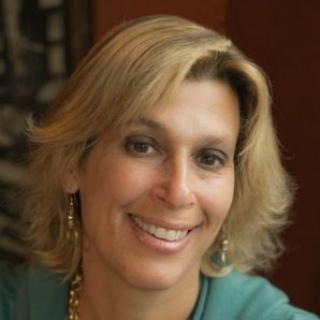
If you follow education, by now you've probably heard about the importance of STEM (science, technology, engineering and math) to prepare our kids for 21st century jobs. There is a dearth of qualified applicants for STEM-related jobs and a dearth of women and minorities in STEM careers, yet STEM is a crucial area of job growth.
Note, there is some debate here.
A 2011 Georgetown University study suggests that STEM jobs will only make up 5 percent of all U.S. jobs by 2018. According to the study, the deeper problem, beyond the shortage of STEM workers to fill STEM jobs, is the need for STEM-related skills across a broad spectrum of occupations.
To an extent, the new Common Core State Standards, which emphasize reading and understanding informational texts across disciplines, including science, social studies and technical subjects, are an attempt to address this growing skill requirement.
Similarly, the K–12 Common Core-aligned Next Generation Science Standards, which emphasize engineering and technology, are slowly being implemented nationwide. In October, Washington became the eighth state to adopt them.
A variety of resources have been and are being developed to support STEM education, connect STEM-related efforts and organizations and measure the efficacy of STEM initiatives.
The non-profit organization, Change the Equation, publishes Vital Signs, which measures the health of K–12 STEM education state by state.
The Thomas B. Fordham Institute's STEM Connector includes a STEM education profile directory, state-by-state data, and offers the STEM Results Project, the first nationwide attempt to identify and analyze measurable results from more than 5,000 STEM organizations in the U.S.
Public awareness about STEM is growing, but problems persist.
Where the boys are
A recent New York Times Magazine article posed the question: Why Are There Still So Few Women in Science?
One answer: gender stereotypes still exist.
Danica McKellar, who gained fame as the winsome Winnie on the popular TV show, The Wonder Years, is doing her part to dispel the myth that math isn't cool for girls. McKellar, who graduated summa cum laude from UCLA with a math degree, is the author of four math books for tween and teen girls. McKellar's books use an equation that is part female empowerment and part girly-girl (e.g, Math Doesn't Suck: How to Survive Middle School Math Without Losing Your Mind or Breaking A Nail), with a strong emphasis on key math concepts.
I've just ordered Girls Get Curves: Geometry Takes Shape, for my geometry-phobic teenage daughter. It will be the first of McKellar's books in our household. I'm intrigued by the book's cover, which promises information on polygons, circles and proofs, but also offers a self-esteem quiz and the question, "How do you attract guys?"

Love them or hate them, GoldieBlox represent a new generation of toys to foster the engineering spirit in girls.
Though there has been a clarion call to provide STEM support for girls, some wonder whether the push has been too aggressive. STEM should be seen as cool for boys and girls alike, is the argument
As you'll learn in our education feature story, "Getting Their Hands Dirty," schools are working hard to foster STEM education for all student, through hands-on project-based learning and exposure to professionals in STEM fields.
Business and government leaders are championing the importance of STEM and allocating funds to improve STEM education. The 100kin10 initiative is a project founded in 2011, with the aim of training 100,000 new STEM teachers within ten years.
"This is our generation's Sputnik moment," President Obama said, in his 2011 State of the Union address. " ... we need to reach a level of research and development that we haven't seen since the height of the Space Race."
The art of STEM
There is a new movement underway to showcase the important intersection of science and the arts.
This past January, the bipartisan Congressional STEAM Caucus was created to "change the vocabulary of education to recognize the benefits of both the art and sciences and how these intersections will benefit our country's future generations."
The non-profit organization, Americans for the Arts, recently convened a webinar discussing the STEM to STEAM movement, featuring academic, business, government and education leaders.
Because, according to Albert Einstein, "the greatest scientists are always artists as well."
The New York Times has just launched a STEM education series. Here's the first installation: "Who Says Math Has to be Boring?"
Education news
STEM expansion in Washington: At Washington's annual STEM summit, Dec. 2, Governor Jay Inslee and business and education leaders called for continued improvement and coordination in STEM education for all students. Washington STEM CEO Patrick D'Amelio announced the expansion of the organization's regional STEM networks. Current networks in Spokane, Yakima and South King County will be joined by networks in Bremerton/West Sound, Snohomish County, Tri-Cities and Vancouver.
Five Washington school districts receive OER grants: The Office of the State Superintendent of Public Instruction announced that five school districts were awarded a total of $90,000 to adapt and implement Open Educational Resources (OER) to meet state academic standards. OERs are public domain teaching and learning materials, which can fill the need for Common Core-aligned teaching materials. The grant recipient are Lake Washington School District, Selkirk School District, Southwest Washington Math Consortium, Spokane Public Schools and Sunnyside School District.
PISA results: The results of the 2012 Program for International Student Assessment (PISA) were released and show that U.S. performance in reading, math and science hasn't changed since 2009 (the last time the test was administered), while other countries have shown gains. Interpretation of PISA tests results is controversial, with critics saying that top performing areas such as Shanghai, China, only test elite students, while the U.S. offers a more democratic approach to education. Others say the PISA results are a wake up call that the U.S. continues to be outpaced academically by other countries, and that the gap is widening.
Seattle School Board elects new officers: New Seattle School Board directors Stephan Blanford and Sue Peters were sworn in this week and executive officers were elected for a one-year term. Sharon Peaslee will serve as board president, Betty Patu will be vice president, and Marty McLaren will serve as executive committee member-at-large, filling in for absent executive members, as necessary.
Lake Washington Schools feedback: Lake Washington School District is asking for feedback on its latest strategic plan. The District encourages families to sign up for the Your Voice page for this and other community engagement opportunities.
Alison Krupnick is ParentMap's education editor and the author of the book Ruminations from the Minivan, Musings from a World Grown Large, Then Small and the blog Slice of Mid-Life.




